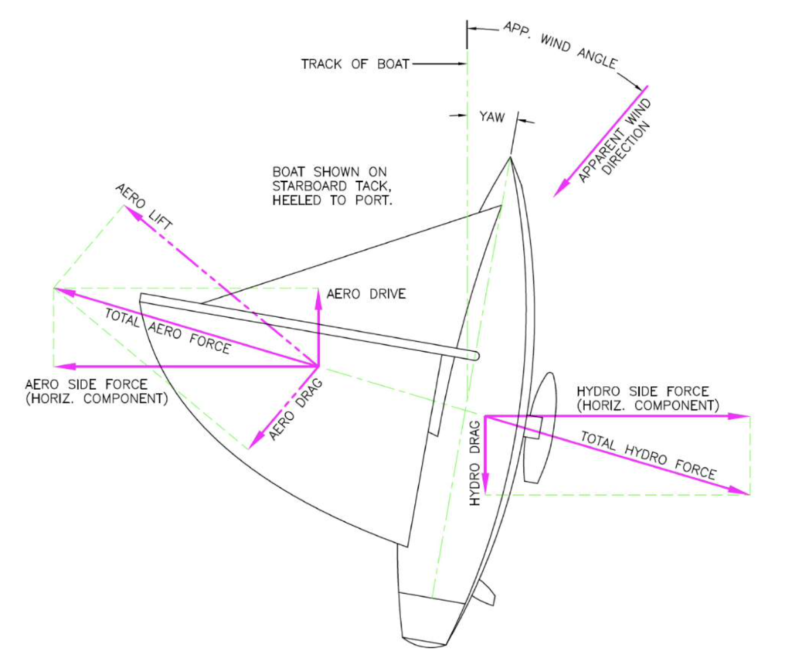TECH TOPICS: Balance
Written and Illustrated by TJ Perrotti
Most sailors know that a boat must “balance right” to sail correctly and efficiently, but what, exactly, does that mean? Let’s start the discussion by going back to the playground that we all remember as a kid and hop back on a see-saw or teeter-totter. This simple playground toy serves as the perfect analogy for the physics that Mother Nature imposes on a sailboat. The mechanics of a simple see-saw respond to and look for a balance of applied forces and moments in the very same manner as does a sailboat moving through the water. In the case of the playground toy, a little kid balances out a big kid by moving further away from the pivot point. Everyone’s happy. Further, there’s a net force that’s transmitted down into the see-saw base that’s equal to the sum of the weight of both kids. The sum of all related forces equals zero, and the sum of all related moments equals zero. Simple.
In the case of a sailboat, you have underwater hydrodynamic forces on one side of the black box (hull, keel, rudder), and above water aerodynamic forces on the other side (sails, mast, rigging), but things must still balance out. When sailing in “steady state” conditions (i.e., smooth seas, constant wind speed and angle, constant boat speed, etc.) a sailboat is none other than a slightly more complicated see-saw, but with a pivot point that allows movement in multiple directions. Ultimately, the forces and moments must balance out if the boat is going to sail straight and steady.
In this birds-eye view of the boat, we see that apparent wind acts on the sails (and rig) to produce a net aerodynamic lift force and a net aerodynamic drag force. By definition, the aero drag force is in the direction of the oncoming apparent wind, and the aero lift force is perpendicular to this. We can add these two force components together (as vectors) to find the net total aero force. And, we can break this total aero force down into two new components: aero drive force is in the direction that the boat is moving through the water, and aero side force is perpendicular to this.
 Those two force components must be equal and opposite to the hydro forces acting on the wet side of the boat, namely: the net hydro drag force, and the net hydro side force. If we add those two hydro forces together (as vectors), the resulting total hydro force is exactly equal in size to and exactly aligned with the aforementioned total aero force.
Those two force components must be equal and opposite to the hydro forces acting on the wet side of the boat, namely: the net hydro drag force, and the net hydro side force. If we add those two hydro forces together (as vectors), the resulting total hydro force is exactly equal in size to and exactly aligned with the aforementioned total aero force.
In this stern-on view of the boat, we again see the aero side force and hydro side force that together are trying to heel or tip the boat over. This heeling force (or roll moment, really) is resisted by the “righting moment” (or RM) of the boat, which results when the center of immersed buoyancy of the heeled boat shifts away (laterally) from the boat’s center of gravity. Crew weight on the weather rail supplements this, too.
Back to our see-saw analogy, equilibrium balance is achieved when:
● The weight of the boat equals the upwards buoyancy force.
● The aero drive force equals the hydro drag force.
● The aero side force equals the hydro side force.
● The heeling or roll moment (aero plus hydro) equals the righting moment.
● The yaw (or turning) moments balance out.


